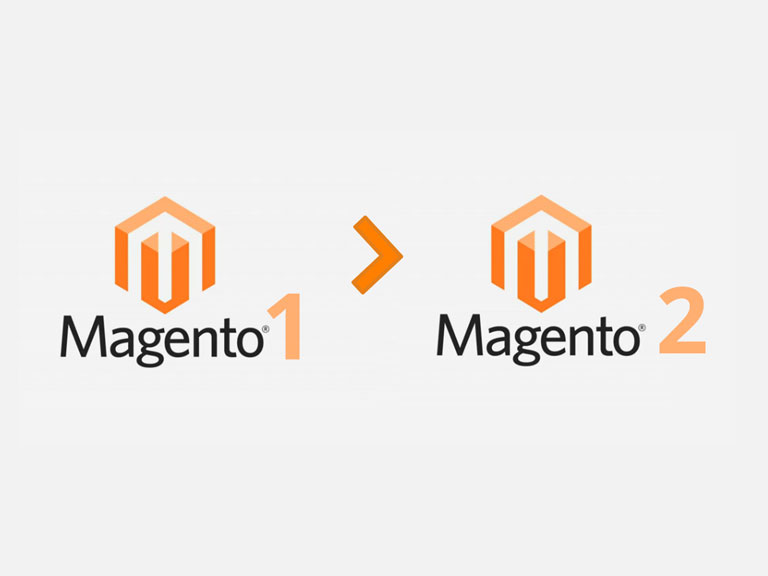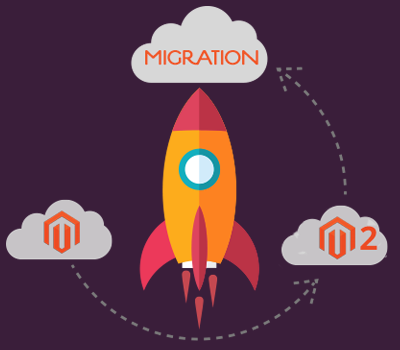
There is no choice! Sooner or later, you have to migrate your website to brand new Magento 2. Although Magento 2 has been around for a while but upgrading it has not been a very pressing matter. In 2010, first release came out and by 2015, the beta version was released.
With huge success of Magento 1.x, all the e-commerce owners had questions whether to migrate or not? Magento has recently cleared the cloud and formally announced that the official support of Magento 1.x will end by June 2020. So don’t expect any security updates or official patches.
Now that Magento has become part of Adobe family, expect highly customized shops. Since it’s a big update, make sure to take a backup! It’s always good to have a Plan B.
This blog will give you a closer look about various important aspects of Magento 2 as compared to Magento 1.

Better Performance and Scalability
Magento 2.0 is faster than Magento 1.0 in terms of page loading on the first view like home, product, category page (1.5 sec per page). It is even better when cache is enabled (less than 0.75 secs per page). The most essential feature of Magento 2.0 is built-in full-cache. It supports varnish as back-end.
The Javascript management has been improved in the new version. There are bundling of Javascript to reduce the page loading time. If compared to old Magento 1.x, tons of JS were required to load a single page.
Responsive and Search Engine Friendly
Beyond overall functionality development, it has major enhancements that makes it more user-friendly. The websites developed in Magento 2 will be mobile responsive which is a big benefit because Google’s algorithm makes those websites come on top searches which are mobile friendly.
On top of that, the responsive design also makes it user-friendly.
More efficient customization
The code-base of Magento 2 has been structured in such a way that all the elements related to a single module now resides in one directory. To manage the installation of modules, Magento now uses, the de facto PHP package manager.
In earlier version, when product patches were installed, it was difficult to maintain the customization. Now, with the separation of business logic and presentation logic, it is unchallenging to customize and maintain the customization with product patch support.
Cheaper and easier updating
Magento 2 will run poorly on outdated software, and it won’t work on PHP 5. So, it is necessary to update to Magento 2 and you can do hassle-free.
Compared to Magento 1.x, installing new extensions and upgrading has become easier and thus cheaper. Earlier, installing just a few elements used to take a great deal of time. Even for developers, possibility of conflicting extensions were arising.
With Magento 2, the process has now become simpler. Even front-end development and the functionality can be altered with ease too. It has all become possible with HTML5, CSS3, and require.js.
Seamless Integration of Third Party Modules
On Magento 2, even the core is developed on GitHub and so many developers work on patches. Apart from that, it has integration of Third party modules like inventory management software, ERP, CRM.
The major problem with non-smooth integration is that the messages can get lost during the communication between Magento and the other system. This can lead to painful trouble.
However, Magento Enterprise Edition has addressed this major problem seriously. It introduced a built-in RabbitMQ (Message Queue) framework that monitors the communication between Magento and other systems.
The second half of its name refers to its main function – storing unsent messages and forwarding them to the relevant systems as soon as possible (for instance, whenever a certain system, say, the inventory management software, is set to refresh).
Split database solution (EE only)
In Magento 1, customers, admins, and developers use the same database, which might lead to database overload. It creates a problem for customers when the developers strain the database.
Magento 2.x has come up with separate databases to make the storage of data smooth.
Dashboard

The new dashboard has made the work of both developer and the client so easy, we can’t believe it. All we can say is, this update should have come way before. Nevertheless, the new dashboard gives an overview of:
- Lifetime sales,
- Average order amount,
- Last orders,
- Top search terms,
- Most viewed products,
- New customers, etc.
To see the overall view of your financial data, it displays your overall state of the business and you can check it out in a glance. Yes, it’s that simple!
Now the time has come!
It’s time to get going and migrate to magento 2. Whether it’s small business or big, it has special benefits for all. Bytegrow is a professional magento development company and help you in migration of your magento website.
The top-notch companies who have already migrated are at the top level in the business and if you want to level up your game, upgrade!
It is best to get your migration done from certified professionals and if you’re thinking to do so, Bytegrow It Solutions understand the complexities and intricacies of migrating from Magento 1.x to Magento 2. Hence, we can guide you the best for it.
